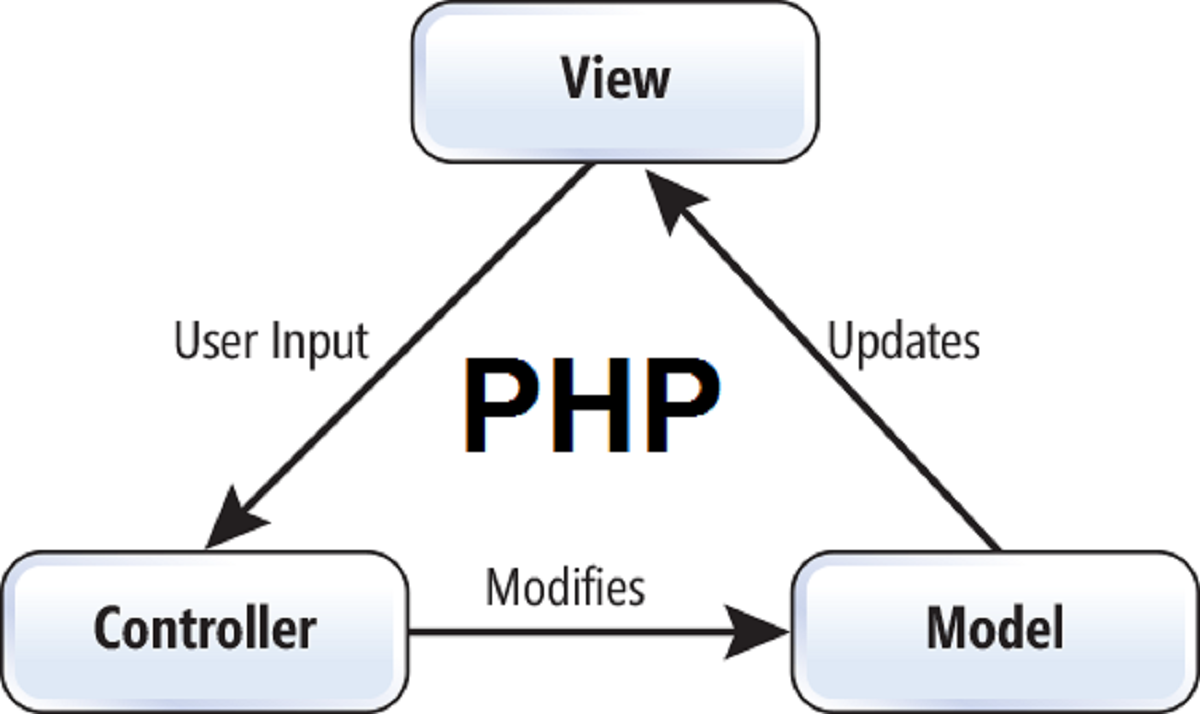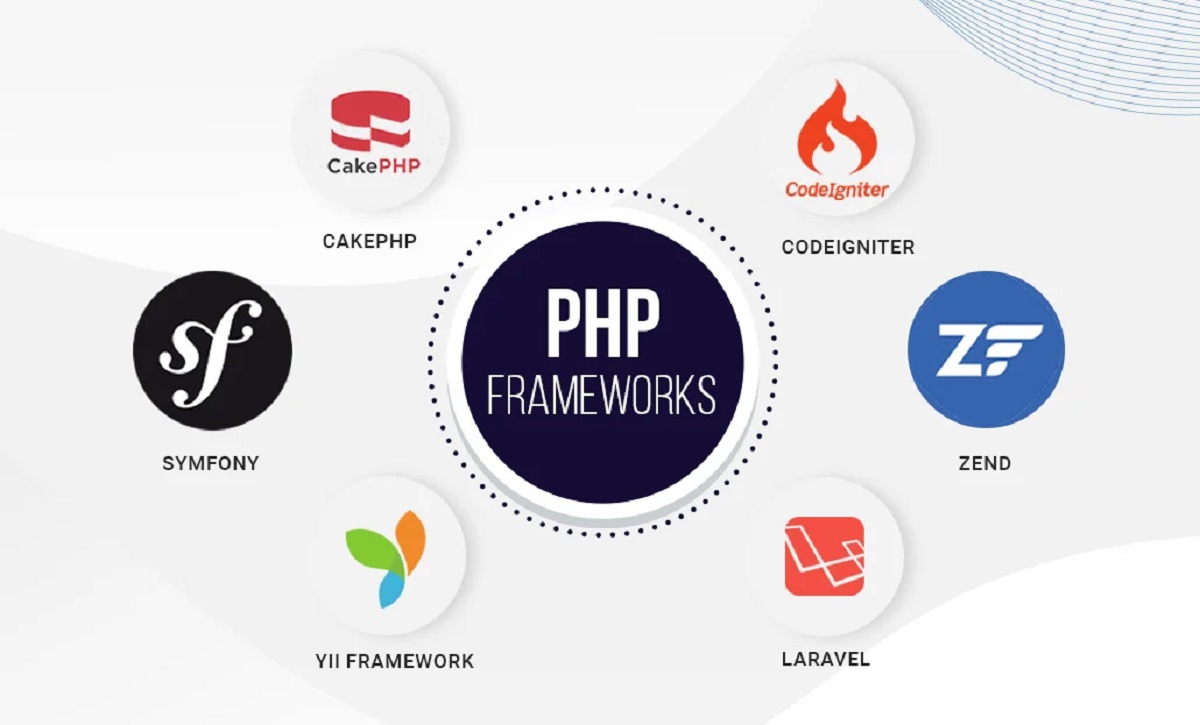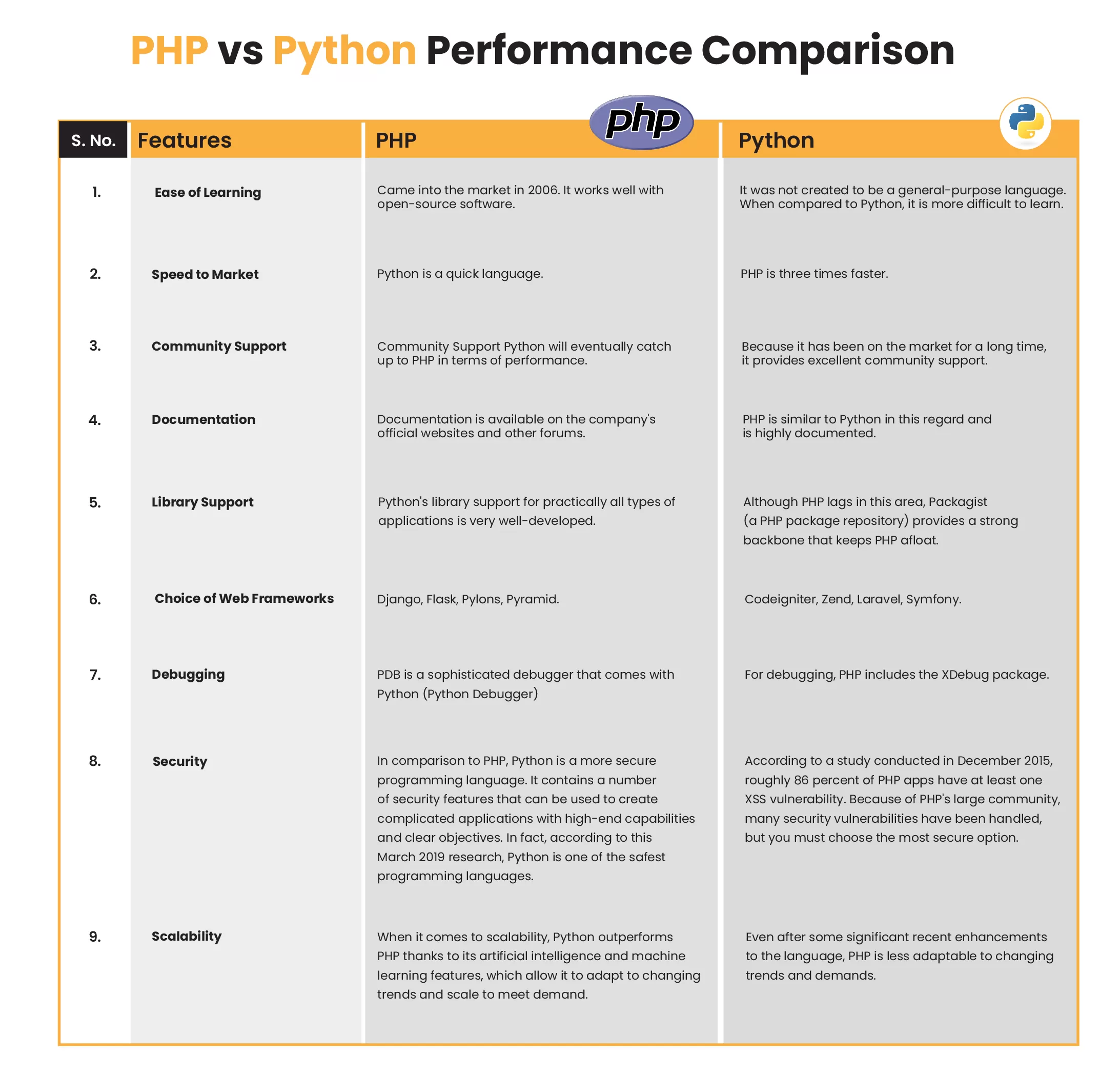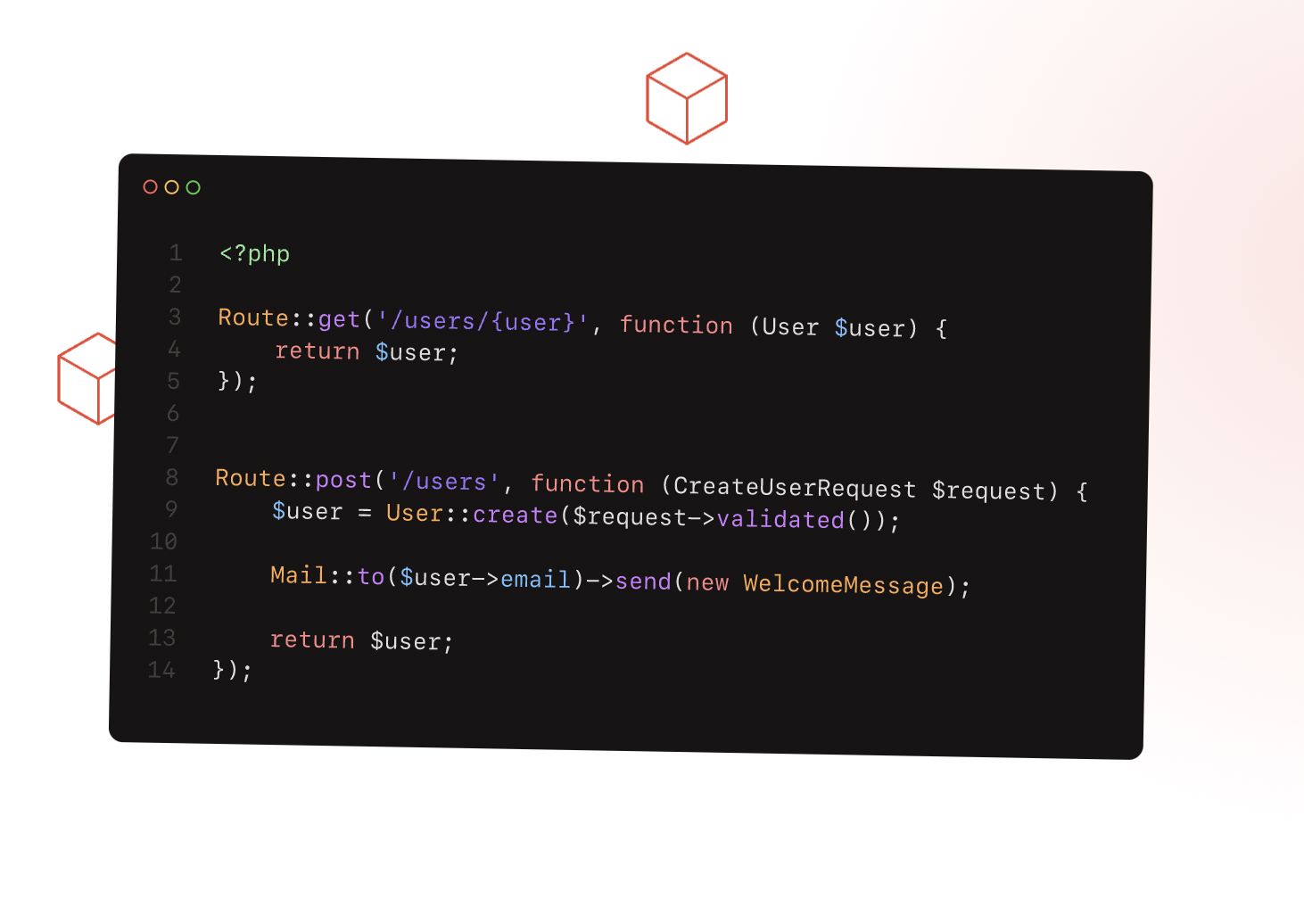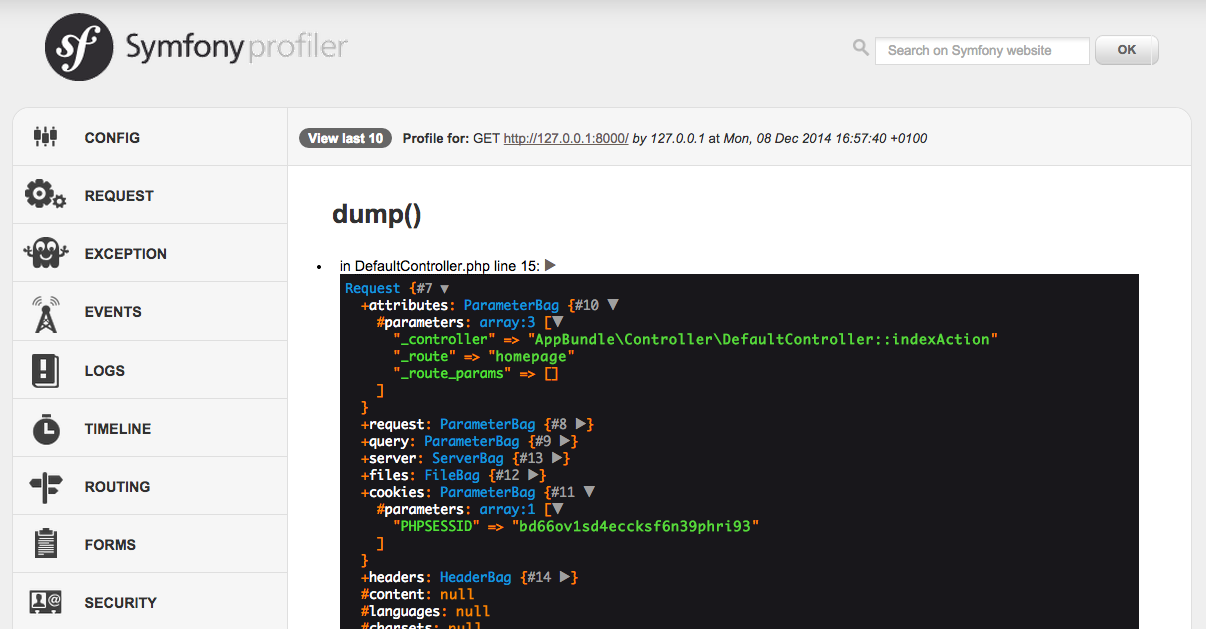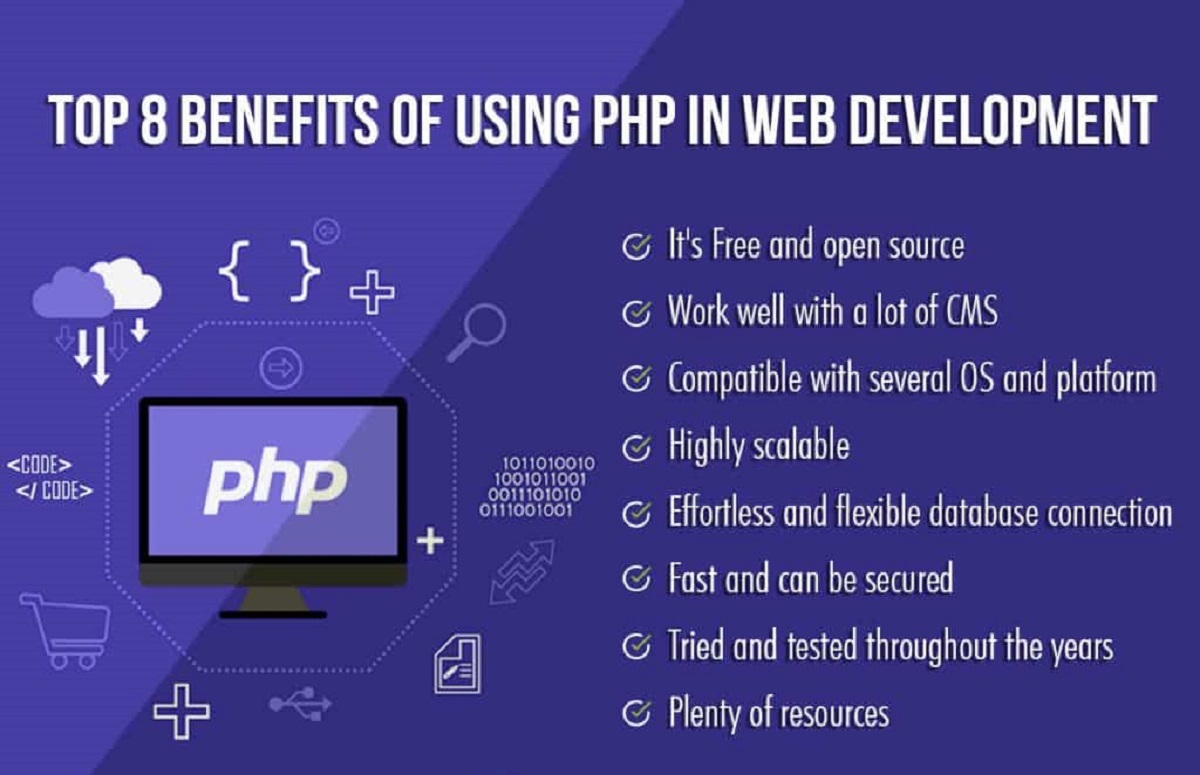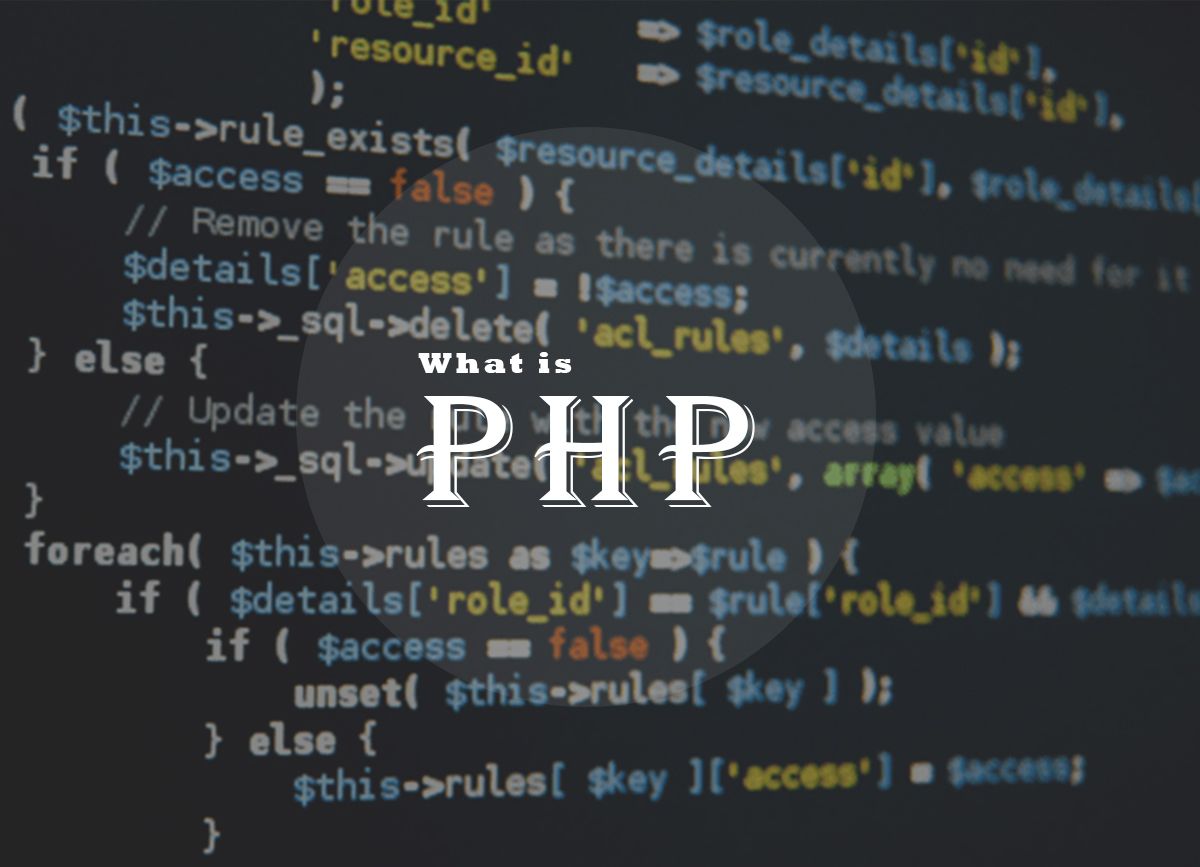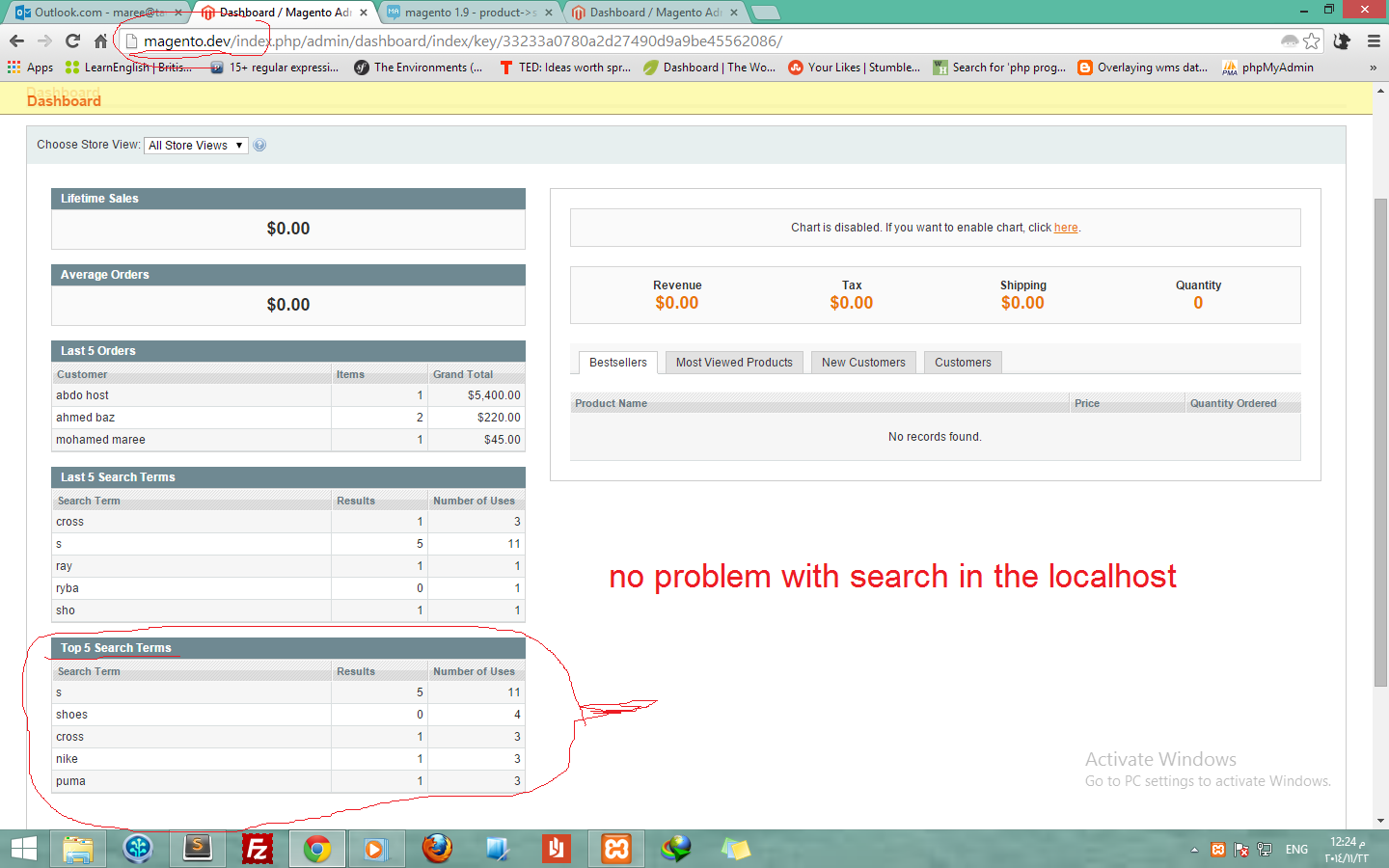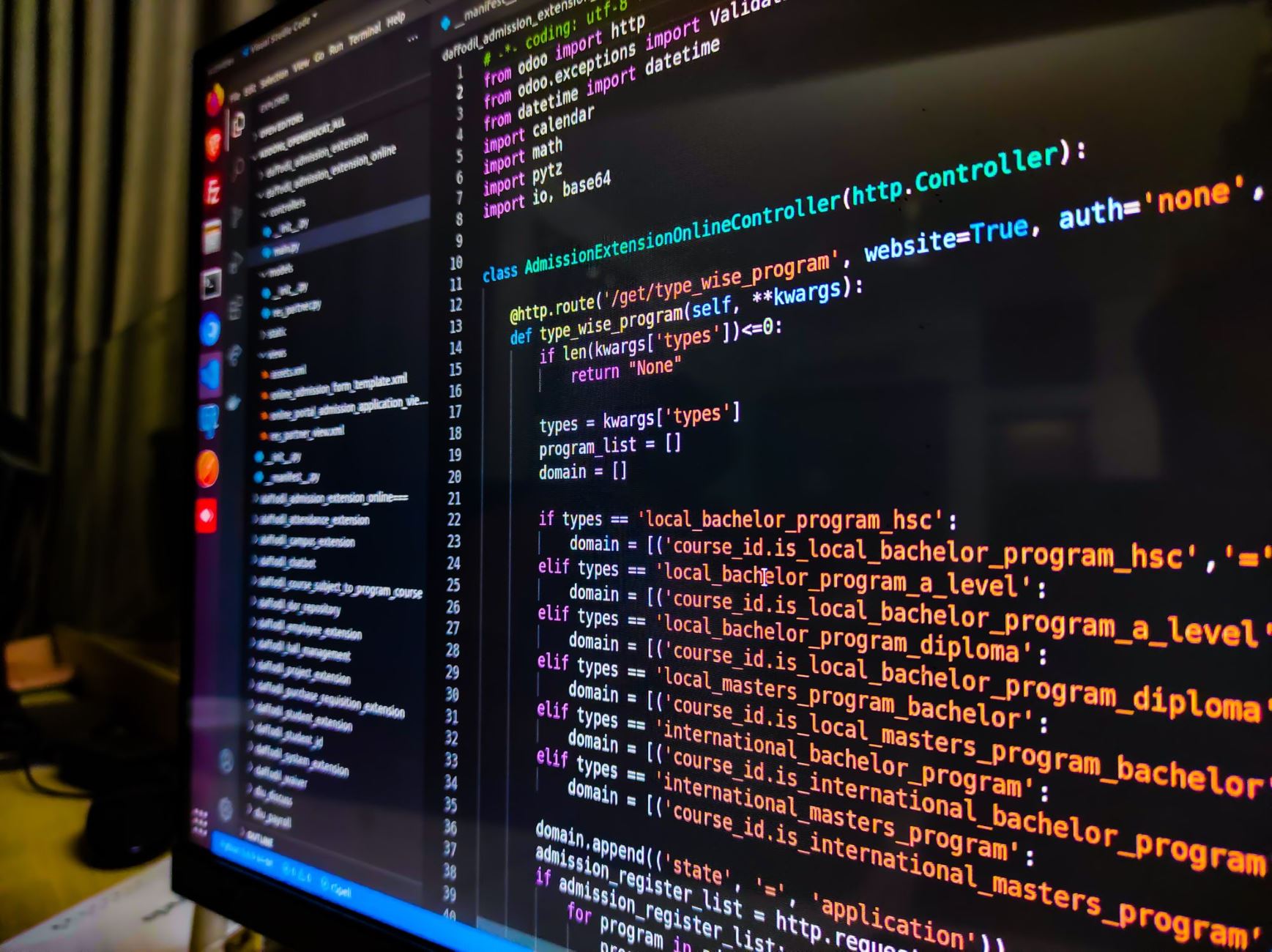Introduction
In the world of web development, it is essential to have a solid understanding of various programming architectures and design patterns. One such popular architectural pattern is Model-View-Controller (MVC). MVC is a structural design pattern that separates the application logic into three interconnected components: the Model, the View, and the Controller.
MVC has gained significant popularity in the PHP community due to its ability to provide a structured approach to building web applications. By dividing the codebase into distinct components, MVC promotes separation of concerns and allows for modular and maintainable code.
In this article, we will explore the concept of MVC in PHP, why it is widely used, and the key components that make up this architectural pattern. We will also delve into how MVC works in the context of PHP, and the benefits it offers to developers and website owners.
Whether you are a seasoned PHP developer or a newcomer to the language, understanding MVC and its implementation in PHP will greatly enhance your ability to build robust and scalable web applications. So let’s dive into the world of MVC in PHP and discover how it can revolutionize your web development projects.
What is MVC?
MVC, or Model-View-Controller, is a software architectural pattern that separates the application logic into three interconnected components: the Model, the View, and the Controller. Each component has a specific responsibility, making the codebase more organized, maintainable, and scalable.
The Model represents the data and business logic of the application. It encapsulates the data access layer, interacts with the database, and performs operations such as reading, writing, updating, and deleting data. The Model also contains the validation and business rules that define how the data should be processed.
The View is responsible for rendering the user interface. It displays the data retrieved from the Model in a visually appealing and user-friendly manner. In PHP, the View layer typically consists of HTML templates combined with some PHP code to dynamically insert data. The View does not contain any business logic and is focused solely on presenting the data to the user.
The Controller acts as an intermediary between the Model and the View. It receives user input, such as HTTP requests, and determines the appropriate actions to be taken. The Controller manipulates the Model, retrieves the necessary data, and passes it to the View for display. It also handles user interactions, such as form submissions or button clicks, and triggers the corresponding actions in the Model or the View.
The main idea behind MVC is to separate the concerns of an application. This separation allows developers to work on different components independently, making the codebase more maintainable and facilitating code reuse. For example, changes to the View layer will not affect the Model or the Controller, as long as the interfaces between the components remain consistent.
By adopting the MVC pattern in PHP, developers can achieve a high level of modularity, code organization, and reusability. This pattern is particularly useful for larger projects where multiple developers are involved, as it provides a clear division of labor and simplifies collaboration.
Now that we have a clear understanding of what MVC is, let’s explore why it is widely used in PHP web development.
Why use MVC in PHP?
MVC is widely used in PHP web development for a variety of reasons. Let’s explore some of the key benefits that this architectural pattern offers:
Separation of concerns: MVC promotes a clear separation of concerns by dividing the application logic into three distinct components. This separation allows developers to focus on specific areas of expertise without being overwhelmed by the entire codebase. It also makes the code easier to understand, maintain, and modify over time.
Code reusability: With MVC, developers can reuse components across different projects or modules, reducing development time and effort. The Model, View, and Controller can be independently developed and deployed in various scenarios, making it easier to build future applications or extend existing ones.
Enhanced maintainability: By separating the application logic into different components, MVC makes it easier to identify and fix bugs or make changes without affecting other parts of the codebase. This modular approach ensures that updates or modifications can be made with minimal impact on the overall application.
Improved scalability: MVC allows for the scalability of application components. Each component can be expanded or modified independently, providing flexibility in adapting to changing requirements or increasing user demand. This scalability makes it easier to add new features, improve performance, and accommodate growth in the future.
Collaborative development: MVC provides a clear division of labor, making it easier for developers to work on different components simultaneously. Multiple developers can collaborate on various layers of the application without interfering with each other’s work. This promotes efficient teamwork and increases productivity in large-scale projects.
Flexibility in UI/UX development: MVC separates the View layer, allowing front-end developers to focus solely on designing and implementing the user interface. This separation of concerns makes it easier to iterate on the UI/UX design without affecting the underlying logic of the application.
Overall, MVC in PHP offers a structured and organized approach to web development, allowing developers to create robust, maintainable, and scalable applications. By adopting MVC, PHP developers can leverage its numerous benefits and improve the efficiency and quality of their projects.
The Components of MVC in PHP
When implementing MVC in PHP, there are three key components that make up this architectural pattern: the Model, the View, and the Controller. Let’s take a closer look at each component:
The Model: The Model represents the data and business logic of the application. In PHP, the Model is responsible for interacting with the database, performing CRUD (Create, Read, Update, Delete) operations, and executing business rules. It encapsulates the data access layer and provides methods to manipulate and retrieve data. The Model is where most of the application’s logic resides, ensuring that data is properly validated and processed.
The View: The View is responsible for rendering the user interface and presenting data to the user. In PHP, Views are typically HTML templates combined with embedded PHP code. The View receives data from the Model and dynamically inserts it into the HTML template, generating the final output that is sent to the user’s browser. The View layer focuses solely on formatting and displaying the data, without any business logic.
The Controller: The Controller acts as an intermediary between the Model and the View. It receives user input, such as HTTP requests, and determines the appropriate actions to be taken. In PHP, Controllers handle routing, process incoming requests, manipulate the Model to fetch or update data, and pass data to the View for presentation. The Controller encapsulates the application’s logic flow and synchronizes the interaction between the Model and the View.
These three components work together in a hierarchical manner. The Controller receives input from the user and decides which actions to take. It updates the Model based on the user’s input, retrieves data from the Model, and passes it to the View for rendering. The View then takes the data provided by the Controller and generates the appropriate presentation for the user.
The beauty of MVC lies in the separation of concerns. Each component has a specific responsibility, making the codebase cleaner, more maintainable, and easier to understand. Developers can focus on their respective areas of expertise without stepping on each other’s toes.
By implementing these three components effectively, developers can harness the power of MVC to create structured, modular, and scalable PHP applications.
The Model
In the MVC architectural pattern, the Model represents the data and business logic of the application. It is responsible for handling data manipulation, performing database operations, and enforcing business rules.
In PHP, the Model interacts with the database through the use of data access objects (DAOs) or object-relational mapping (ORM) libraries. These techniques provide an abstraction layer that allows the Model to interact with the database without exposing the underlying implementation details.
The Model consists of classes and methods that define the structure of the data, validate input, and execute database queries. It encapsulates the logic required to create, read, update, and delete data, commonly referred to as CRUD operations.
The role of the Model goes beyond just data manipulation. It is responsible for validating and sanitizing user input, ensuring data integrity, and enforcing business rules. The Model contains the necessary logic to perform calculations, apply transformations to the data, and handle complex business operations.
For example, in an e-commerce application, the Model might include classes for handling user registration, managing product inventory, processing orders, and generating invoices. Each Model class would have methods for validating user input, interacting with the database to retrieve or update data, and enforcing business rules specific to that domain.
By keeping the data and business logic separate from the presentation layer, the Model promotes code reusability and maintainability. Developers can easily modify or extend the Model without impacting other components, allowing for more efficient development cycles and easier bug fixes.
Additionally, by centralizing the data access and business logic in the Model, it becomes easier to test and debug. Unit tests can be written to verify the functionality of the Model’s methods, ensuring that they operate correctly and produce the expected results.
Overall, the Model in PHP’s MVC pattern is a critical component that handles data manipulation, enforces business rules, and provides an interface for accessing and modifying the application’s data. When implemented effectively, the Model contributes to creating modular, maintainable, and scalable PHP applications.
The View
In the MVC architectural pattern, the View component is responsible for presenting the data to the user and rendering the user interface. It focuses on the visual representation of the data and ensures a pleasant and intuitive user experience.
In PHP, the View is typically composed of HTML templates mixed with embedded PHP code. These templates define the structure and layout of the user interface, while the embedded PHP code allows for dynamic insertion of data retrieved from the Model.
The View receives data from the Controller and renders it in a format that is visually appealing and user-friendly. It may also include CSS stylesheets, JavaScript code, and other assets to enhance the design and interactivity of the user interface.
The primary responsibility of the View is to separate the presentation logic from the business logic. It should not contain any complex processing or data manipulation. Instead, it focuses on displaying the data provided by the Controller in a clear and understandable manner.
Views can be designed to support various devices and screen sizes, allowing for a responsive user interface. By utilizing modern CSS frameworks and techniques, developers can create visually stunning and responsive designs that adapt to different devices, such as desktops, tablets, and mobile phones.
In larger applications, it is common to have multiple Views for different parts of the application. For instance, an e-commerce application might have views for product listings, individual product pages, user login, shopping cart, and checkout processes. Each View is responsible for rendering a specific section of the user interface, ensuring maintainability and reusability.
By separating the View from the other components in the MVC pattern, PHP developers can collaborate more effectively. Front-end developers can focus on designing and implementing the user interface, while back-end developers work on the Model and Controller. This separation of concerns promotes a division of labor and simplifies the development process.
Overall, the View component in MVC is responsible for presenting data to the user and creating an engaging user interface. By separating the presentation logic from the other components, the View ensures a clean and maintainable codebase, streamlines collaboration, and enhances the overall user experience.
The Controller
In the MVC architectural pattern, the Controller component acts as the intermediary between the Model and the View. It receives user input, determines the appropriate actions to take, and coordinates the flow of data and events.
In PHP, the Controller represents the logic that handles incoming requests and corresponds to specific actions or operations. It receives user input, such as form submissions or HTTP requests, and interprets that input to determine the appropriate actions to be taken.
The Controller interacts with the Model to fetch or update data based on the user’s input. It then passes the relevant data to the View for presentation. The Controller encapsulates the business logic of the application, ensuring that the Model and View remain decoupled and independent of each other.
The primary responsibility of the Controller is to handle the flow of the application. It processes the incoming request, determines the appropriate action, and delegates tasks to the Model and View accordingly. The Controller is responsible for selecting the correct data to display, modifying data, and triggering any necessary updates.
In a PHP MVC application, the Controller is often implemented as a set of classes or functions that map directly to specific URLs or routes. For example, a request to “/products/view/123” might be mapped to the “view” action of the “products” Controller, which then retrieves the product data from the Model and passes it to the corresponding View for display.
The Controller plays a vital role in enforcing business rules and validation. It ensures that the user’s input is valid and adheres to the defined rules. For example, it may verify that user-submitted form data is properly formatted, check for duplicate entries before inserting data into the Model, or enforce access control based on user roles.
By effectively separating the responsibilities of the Model, View, and Controller, the MVC pattern promotes the reusability and maintainability of code. Developers can modify or extend the functionality of the Controller without affecting the other components, allowing for efficient development and easier bug fixes.
In summary, the Controller component in PHP’s MVC pattern acts as the intermediary between the user’s input, the data in the Model, and the presentation in the View. It handles the flow of the application, triggers actions, and ensures the proper coordination between the Model and the View.
How MVC Works in PHP
MVC works by dividing the application logic into three distinct components – the Model, View, and Controller – and facilitating their collaboration to build a fully functional PHP application. Let’s explore how MVC works in PHP:
1. User interaction: MVC begins when a user interacts with the application, such as submitting a form or clicking a link. The user’s action triggers a request to the server, which is then handled by the PHP application.
2. Controller handling: The Controller receives the request and determines the appropriate action to be taken. It may validate the user’s input, retrieve or modify data from the Model, and prepare the necessary data for the View to render the response.
3. Data retrieval and manipulation: The Controller communicates with the Model to fetch or update data as needed. It may execute database queries, call external APIs, or perform computations using the data received from the user or previous interactions.
4. Data binding: Once the necessary data is retrieved from the Model, the Controller binds it to the appropriate View. The View uses the data to generate the HTML output, combining the HTML template with dynamically inserted data.
5. Rendering and response: The View renders the HTML output and sends it back to the user’s browser. The user can then see the response on their screen, such as a web page with populated data or a confirmation message.
6. Next user interaction: The cycle continues as the user interacts further with the application. The Controller handles subsequent requests, retrieves or updates data through the Model, and displays the updated response through the View.
MVC promotes loose coupling between the Model, View, and Controller, allowing them to be developed, modified, and tested independently. This separation of concerns facilitates code reuse, enhances maintainability, and makes collaboration between developers smoother.
Furthermore, MVC in PHP enables developers to create modular and scalable applications. The components can be added or extended as needed, allowing for future enhancement or accommodating growing requirements.
Implementing MVC in PHP often involves using frameworks such as Laravel, CodeIgniter, or Symfony. These frameworks provide built-in features, tools, and conventions to streamline MVC development and make it easier to work with the Model, View, and Controller.
In summary, MVC in PHP works by dividing the application into three components – the Model, View, and Controller – and orchestrating their collaboration to handle user interactions, manipulate data, and present the results to the user. This architecture provides a structured and organized approach to web development in PHP.
Benefits of Using MVC in PHP
Implementing the Model-View-Controller (MVC) architectural pattern in PHP offers a range of benefits that can greatly enhance the development process and the resulting web applications. Let’s dive into the key advantages of using MVC in PHP:
Modularity and Separation of Concerns: MVC promotes a clean separation of concerns, with each component having a specific role. By organizing the codebase into Model, View, and Controller, developers can work on specific parts independently, making the codebase more maintainable and easier to understand.
Code Reusability: With MVC, components can be reused across different projects or modules. The Model encapsulates the data handling logic, allowing for easy integration into other applications. This reusability saves development time and effort, fostering efficient and scalable development practices.
Improved Testing: MVC lends itself well to testing, with each component being independent and testable. Unit tests can be written for the Model, View, and Controller individually, ensuring that each component functions correctly. This promotes robust and reliable applications.
Scalability: MVC provides scalability by allowing components to be added or modified independently. As an application grows, developers can expand or replace components as needed without affecting the entire system. This scalability helps accommodate changes in user demand and future enhancements.
Collaborative Development: The division of responsibilities in MVC enables separate teams or developers to work on different components simultaneously. For example, front-end developers can focus on crafting appealing Views, while back-end developers can work on the logic within the Model and Controller. This promotes efficient teamwork and speeds up development cycles.
Code Maintainability: By adhering to the principles of MVC, codebases become cleaner and easier to maintain. With well-defined interfaces between components, changes made to one component have minimal impact on the others. This reduces the chances of introducing bugs and makes troubleshooting and bug fixing more efficient.
Enhanced Flexibility and Customizability: MVC allows for flexibility in terms of UI/UX development. Front-end developers can work on enhancing the Views independently, adapting them to different screen sizes or implementing responsive designs. This flexibility ensures a seamless user experience across various devices.
MVC is widely adopted in the PHP community due to its ability to create structured, modular, and maintainable web applications. By leveraging the benefits of MVC, PHP developers can optimize their workflows and deliver robust, scalable, and user-friendly applications.
Conclusion
MVC is a powerful architectural pattern that provides a structured and organized approach to PHP web development. By dividing the application logic into three interconnected components – the Model, View, and Controller – MVC offers a range of benefits that enhance the development process and the resulting applications.
The Model is responsible for handling data and business logic, the View focuses on presenting the user interface, and the Controller acts as the intermediary, coordinating the flow of data and events. This separation of concerns promotes code reusability, modularity, and maintainability.
Implementing MVC in PHP enables developers to work on specific components independently, enhancing collaboration and speeding up development cycles. By dividing tasks and responsibilities, multiple developers can work simultaneously on separate layers of the application without interfering with each other’s work.
MVC also improves the testing process, as the components can be individually tested for functionality and reliability. The clean separation of concerns allows for more targeted and effective unit testing, ensuring that each component operates correctly.
One of the primary advantages of MVC is scalability. As applications grow and evolve, developers can add or modify components without affecting the entire codebase. This scalability allows for future enhancements and accommodates changing user demands.
Furthermore, MVC enhances code maintainability by promoting clean codebases and minimizing code dependencies. Changes made to one component have minimal impact on the others, reducing the chances of introducing bugs and simplifying troubleshooting and bug fixing.
Finally, MVC provides flexibility and customizability in UI/UX development. Front-end developers can focus on creating visually appealing and responsive Views, ensuring a seamless user experience across different devices and screen sizes.
In conclusion, adopting the MVC pattern in PHP web development offers numerous benefits, including modularity, code reusability, scalability, collaborative development, code maintainability, and enhanced flexibility. By leveraging the power of MVC, PHP developers can create well-structured, maintainable, and scalable applications that provide an excellent user experience.







